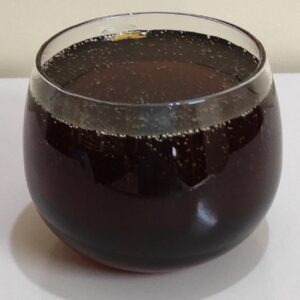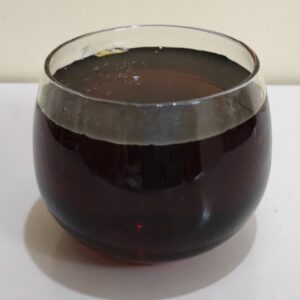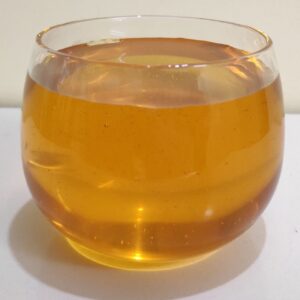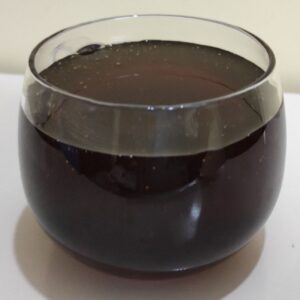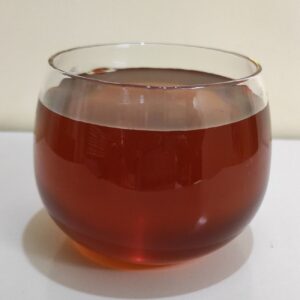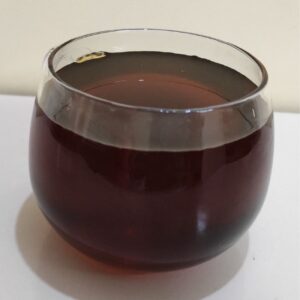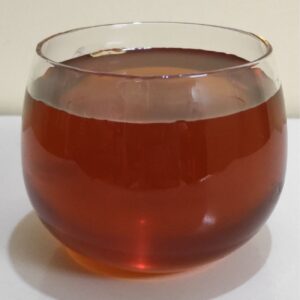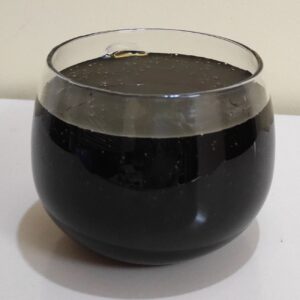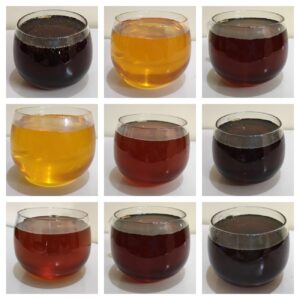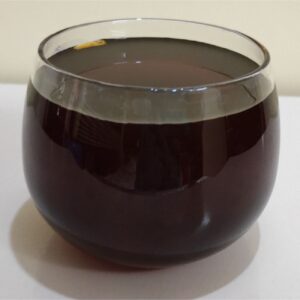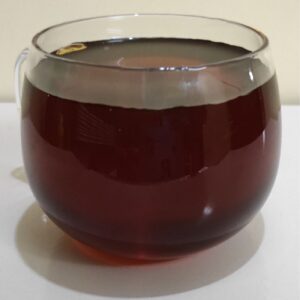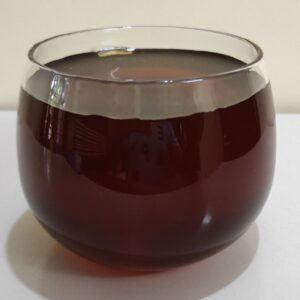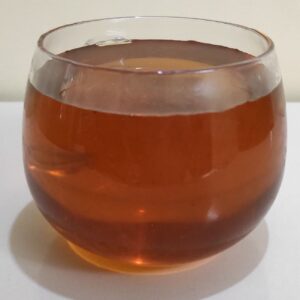Store
Natural Honey Collection
14 Varieties
These are NOT Flavors. Just Made by Honey Bees.
Read Honey Basics (Purity, Color, Crystallization…) (5 min) & Honey Selection Guide (5 min) to avoid buying wrong products
Honey Collection
Click any image for details and reviews
Buy More, Save More!
| Total Units (across honey types) | Discount / Unit |
|---|---|
| 2 or 3 | ₹5 / Unit |
| 4 | ₹10 / Unit |
| 5 or more | ₹40 / Unit |
| 20 or more | ₹55 / Unit |
| Ex: get ₹240 discount on buying 5 jamun, 1 neem honey. | |
| Not available on samples. Must buy at least 2 different honey types. | |
| Combine requirements of friends & neighbors to get max discount | |
Honey Basics
Protein content of honey causes it to have lower surface tension. Any liquid (including honey) with lower surface tension tends to have air bubbles.
For example, you cannot make bubbles from pure water due to its high surface tension. But you can decrease its surface tension by adding soap water, and then make bubbles.
Pure honey also crystalizes due to presence of natural glucose in it, this is not a sign of adulteration. In fact, creamed honey is sold in the US as it is easy to spread on bread/toast etc. Honey with low glucose to fructose ratio crystalize less often than others. For example acacia honey doesn’t crystalize often.
Keep the crystalized honey in sunlight or warm water to bring it back to normal form and use.
Original honey when stored in air-tight container has virtually unlimited shelf-life as many harmful bacteria, fungus cannot survive in honey. This is due to its ability to absorb moisture, the presence of natural phenolic acids, enzymes that can produce hydrogen peroxide, and other bio active compounds in it.
That’s why honey is used as natural antibiotic, applied on pimples and wounds.
If bees collect nectar from organically produced flowers (i.e. without using synthetic pesticides and fertilizers) and make honey, then it should be called organic honey. Availability of large-scale organic farms is a challenge.
Honey produced in forest regions is always organic, by default, as forests are free from air & water pollution, harmful pesticides, fertilizers, chemicals due to absence of human and industrial activity.
Honey from Kashmir region can also be considered organic for similar reasons.
Type of flowers that bees collect nectar from to make honey, and the weather influences the color of honey. That’s why original honey comes in various colors.
Generally, darker honey has more antioxidants. But there are exceptions.
Honey gets its color due to the presence of natural pigments (carotenoids and anthocyanins) other minor compounds. Honey’s medicinal properties are due to polyphenolic compounds , amino acids, vitamins, enzymes, organic acids & minerals, which are either produced by the bees or already present in the nectar.
It’s found that there’s a good positive correlation between the darkness of honey and levels of these useful compounds. Dark chocolate is considered healthier than normal chocolates for similar reasons.
They either blend multiple low-cost varieties or sell multifloral honey only, which looks yellow in color. Since popular companies sell yellow color honey only, many tend to believe natural honey exists in just one color. Some genuine sellers also sell single variety of honey since maintaining multiple verities need extra inventory planning and investment.
Characteristics of honey like taste, color, texture, aroma, benefits depend primarily on the following.
- Type of flowers from which nectar is collected (ex: neem, tulsi, eucalyptus etc.) by bees to make honey
- Geographical region (ex: honey from Kashmir is different from other regions. Weather, pollution, altitude, flower diversity etc. of the region influence honey)
- Health of the honey bees (Improper management of hives, lack of sufficient flowers, pesticide exposure, pests make bees fall sick)
Bees usually collect nectar from whatever the flowers available nearby and make honey. This is called multifloral honey.
If bees collect nectar from a single variety of flower it’s called monofloral honey. For example, tulsi plants are grown in large areas for herbal medicine production. When beekeepers keep bee boxes in such plantations , bees collect majority of their nectar from tulsi flowers and make monofloral tulsi honey.
Some people prefer monofloral honey due to their unique taste, color, texture, aroma, benefits.
- Foraging bee collects nectar from nearby flowers and hand over it to a group of bees waiting at it’s home (hive). 70 to 80 % of nectar is just water.
- Inside the hive, nectar gets transferred from one bee to another until it gets deposited in the wax cells. In this process (know as regurgitation) bees add enzymes, proteins, partially digest & process nectar to convert it into honey. At this stage water level comes down to 50 to 70%
- Now bees bring down the water level to ~18% by generating body heat and fluttering the wings to circulate air.
- After this, bees seal the cells air-tight with wax produced from their glands. Once sealed, the honey never spoils.
- Feeding bees with sugar, giving antibiotics to them: This happens at the farmer’s (beekeeper) level. When sufficient flowers are not there in the nearby area, bees are fed with sugar for their survival. Feeding sugar impacts bees and any honey they make. When they fall sick, they are given antibiotics, which might contaminate honey. Migratory-beekeeping is the better alternative for this.
- Over Heating and industrial processing of honey: Some sellers extract unripen honey (honey that’s not yet sealed by bees with wax), for commercial reasons. Such honey spoils faster due to high water content. To avoid this, they heat honey to bring down water content to ~18%, add preservatives. Heated honey flows faster and is easier to deal with by machines. That’s why large scale sellers who use machines to fill bottles heat honey. Excessively Heated and processed honey is not as useful as raw honey. For example, enzymes diastase, invertase present in honey and antibacterial activity are sensitive to heat.
- Adding flavors: Some clever sellers add flavors to honey, to make it tastier, smell better than original honey. This is to trick customers into believing their honey is original. Many customers fall for this and choose tastier honey over truly original honey.
- Mixing with cheaper sweeteners like corn syrup: Some sellers adulterate honey by adding cheaper sweeteners such as HFCS (high fructose corn syrups). HFCS is much cheaper and harmful than normal sugar. Some do this to make money fast while many others do this as they spend so much on sales, marketing, distribution that they don’t have sufficient funds to procure high-quality honey from farmers. We spend as low as possible on seller-centric expenses so that we have sufficient money to spend on customer-centric expenses like quality maintenance.
Beekeeper (honey farmer) is a person who keeps honey bees in portable boxes (hives). Bees live in the hives, freely collect nectar from nearby flowers and make honey. The farmers extract honey without harming the bees and their hives, using extractors. Their primary responsibility is to keep boxes nearby plants/trees with nectar producing flowers. It’s a 4500-year-old practice. Honey sellers’ responsibility is to get high-quality honey from genuine farmers and make it safely, hygienically reach the customers.
Bees need flowers to make honey but no area has flowers 365 days. Farmers who do beekeeping in a fixed location feed bees with sugar when flowers are not there.
But some farmers, when flowers are not there in their area, migrate the bee boxes to a new area which has seasonal flowers at that time. They keep migrating from one area to another in search of flowers so that bees continue collecting natural nectar and make honey. This is called migratory beekeeping.
They produce multiple varieties of honey (neem, tulsi, eucalyptus etc.) as they keep migrating. We sell multiple varieties of honey as we source them from migratory beekeepers.
Honey that’s not gone through excessive heating, ultra filtering, industrial processing, which alter natural properties of honey, is called raw honey.
Processed honey consistently has the same thickness, color, smell, taste etc. like a man-made product. This is what often you find in supermarkets. Whereas original raw honey purchased from farmers doesn’t have consistency since seasons, weather, flower source naturally impact honey properties.
One should consume raw honey to get most benefits.
Honey Local Names ( Table 1/2)
| English | Hindi | Telugu | Tamil | Kannada | Malayalam |
|---|---|---|---|---|---|
| Forest Honey | वन शहद | అడవి తేనె | வன தேன் | ಅರಣ್ಯ ಜೇನುತುಪ್ಪ | വനം തേൻ |
| Litchi Honey | लीची शहद | లీచీ తేనె | லைகீ தேன் | ಲಚೆ ಜೇನುತುಪ್ಪ | ലിച്ചി തേന് |
| Eucalyptus Honey | युकलिप्टुस शहद | యూకలిప్టస్ తేనె | யூகலிப்டஸ் தேன் | ಯೂಕಲಿಪ್ಟಸ್ ಜೇನುತುಪ್ಪ | യൂക്കാലിപ്റ്റസ് തേന് |
| Jamun Honey | jamun / jambul honey | నేరేడు తేనె | naaval pazham தேன் | ನೇರಳೆ ಹಣ್ಣಿನ ಜೇನುತುಪ್ಪ | ഞാവല് തേന് |
| Ajwain Honey | अजवायन शहद | వాము తేనె | ஓமம் தேன் | ಓಮಾ ಜೇನು | അയമോദകം തേന് |
| Kashmir (Himalayan) Honey | हिमालय शहद | హిమాలయన్ తేనె | இமயமலை தேன் | ಹಿಮಾಲಯನ್ ಜೇನು | ഹിമാലയൻ തേന് |
| Rose wood (Sheesham) Honey | शेशम शहद | శీశం తేనె | ஷிஷம் தேன் | ಶಿಶಮ್ ಜೇನು | ശൂപം തേന് |
| Neem Honey | नीम शहद | వేప తేనె | வேம்பு தேன் | ಬೇವು ಜೇನು | ആര്യവേപ്പ് തേന് |
| Sidr (jujube) Honey | जूजूब शहद | Sidr తేనె | Sidr தேன் | Sidr ಜೇನು | Sidr തേന് |
| Tulsi Honey | तुलसी शहद | తులసి తేనె | துளசி தேன் | ತುಲ್ಸಿ ಜೇನು | തുളസി തേന് |
| Acacia Honey | अकाशिया शहद | అకాసియా తేనె | அகாசியா தேன் | ಅಕಾಸಿಯಾ ಹನಿ | അക്കേഷ്യ തേന് |
| Kashmir White Honey | Kashmir White Honey | Kashmir White Honey | Kashmir White Honey | Kashmir White Honey | Kashmir White Honey |
| Multifloral Honey (Light) | Regular / normal Honey | Regular / normal Honey | Regular / normal Honey | Regular / normal Honey | Regular / normal Honey |
| Multifloral Honey (Golden) | Regular / normal Honey | Regular / normal Honey | Regular / normal Honey | Regular / normal Honey | Regular / normal Honey |
Honey Selection Guide ( Table 2/2)
| Name | Origin | Specialty |
|---|---|---|
| Forest Honey ₹435 | Jim Corbett area, and Sundarban (West Bengal) | 1. Forest areas are free from air & water pollution, harmful pesticides, fertilizers, chemicals due to absence of human and industrial activity. Hence honey sourced from here is considered true organic honey, by default. 2. Bees collect nectar from wide variety of wild flowers in forests and make honey. Hence this variety is very beneficial 3. This honey looks dark. In general, the darker the honey the healthier it is. |
| Litchi Honey ₹435 | Bihar, Punjab (Pathankot), Uttarakhand | It's very thick, sweeter and delicious hence good for direct application on bread, toast, fruit salad, etc. |
| Eucalyptus Honey ₹445 | Uttarakhand, Uttar Pradesh | Though eucalyptus trees are cultivated for timber and essential oil which is used in herbal medicine (Vicks VapoRub etc.), it's flowers are a rich source of nectar for bees to make honey from. This honey is consumed mainly for its medicinal values including for cold, cough and other respiratory diseases. |
| Jamun Honey ₹445 | Punjab (Pathankot), Madhya Pradesh | Bees make this tasty honey by collecting nectar from jamun flowers. As jamun honey has low glycemic index, prediabetic and diabetic patients prefer this as a safer alternative to common sugar. |
| Ajwain Honey ₹445 | Gujarat, Madhya Pradesh | Ajwain or carom plants have tiny flowers. Honey made by bees using nectar from these flowers helps solve digestion, stomach pain, acid reflux problems |
| Kashmir (Himalayan) Honey ₹460 | Himalayan Region | Himalayan region is know for wide variety of medicinal plants. So far, at least 1700 plants with medicinal values are already identified. This region is virtually free from pollution and industrial activity hence honey from here is organic by default. Bees collect nectar from multiple flowers in this region and make this multifloral honey. This is thick and sticky. |
| Rose wood (Sheesham) Honey ₹460 | Bihar, Jharkhand, Uttarakhand | Indian Rose Wood (Sheesham) trees are primarily grown for timber. Products of this tree are used in Siddha, Ayurveda medicines for treatment of skin, stomach , weakness, breast cancer, bone strength related problems. Bees make this thick & visually appealing honey by collecting nectar from rose wood flowers. It's used for it's medicinal values, taste |
| Neem Honey ₹480 | Uttar Pradesh, Punjab | Bees collect nectar from tiny flowers of neem and make this honey. It's the most highly demanded honey in India. Use of neem products in Ayurvedic, Siddha and Unani medicine for skin, hair, dental, body pain related problems is well know. This honey is also demanded by prediabetic and diabetic patients as anecdotal evidence suggests that using it instead of normal sugar helps control diabetes. Neem honey tastes sweet but it leaves a bitter aftertaste. |
| Sidr (jujube) Honey ₹480 | Rajasthan | Sidr honey, especially from Yemen, is the 2nd costliest honey in the international market after Manuka honey due to its religious significance and long list of medicinal properties. It's mentioned in texts such the Quran and the Old Testament. In India, it's produced in Rajasthan. Popular belief is that this is the best honey for fertility related problems. Studies shown that it fights effectively against MRSA bacteria. MRSA bacteria cause difficult-to-treat diseases in humans, as these strains have already developed resistance to man-made antibiotics. In the Arab speaking countries, it's used for liver, stomach, menstruation, eye related problems. |
| Tulsi Honey ₹480 | Madhya Pradesh, Rajasthan, Jharkhand | Tulsi is grown at home, temples for religious reasons, and commercially for its essential oil, for making Ayurvedic medicine and herbal tea. It has tiny flowers from which bees collect nectar and make honey. Tulsi honey is used for cough, common cold, fever and sleep disorders. |
| Acacia Honey ₹499 | Kashmir, Himachal Pradesh | Acacia honey comes from 'false acacia' trees in virtually pollution free Kashmir (hence considered organic by default). This honey is available in very limited quantity as Acacia flowers are available just for a week or two in a year. This thick and sticky honey is one of the best. It sweetens without spoiling the taste of food or beverage it added to. |
| Kashmir White Honey ₹749 | Kashmir | Kashmir white honey comes from a certain variety of acacia plants, and actually looks very light yellow that's why it's called white honey. This is the costliest Indian honey. Most of this exotic honey is exported to the US. It's also organic by default as produced in virtually pollution-free Kashmir area. This honey is thick and sticky. |
| Multifloral Honey (Light) ₹420 | Uttarakhand, West Bengal, Haryana, Punjab, Bihar | Multifloral honey does not come from any single specific source of nectar producing flower. Instead, bees collect nectar from whatever the flowers available in the surrounding areas and make honey. Since flower selection is not needed, this can be produced almost anywhere. Due to its low cost, many commercial companies sell only this variety, which is why many people know only this variety of honey. |
| Multifloral Honey (Golden) ₹420 | Uttarakhand, West Bengal, Haryana, Punjab, Bihar | Both Multifloral Honey (Light) and Multifloral Honey (Golden) are same except for one looks light yellow and other looks golden yellow. This color difference is due to altitude and other geographic conditions of area from which the honey is produced. |

